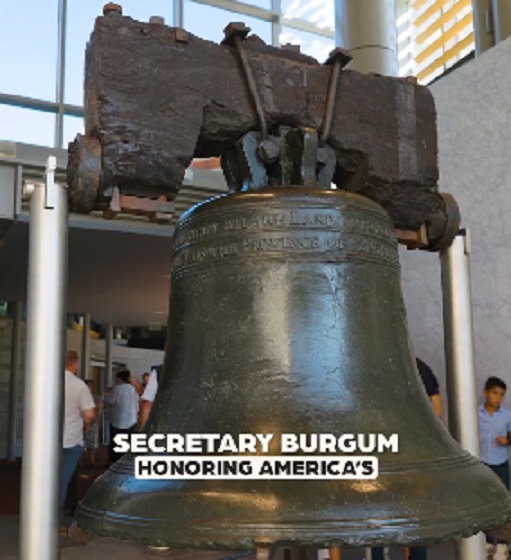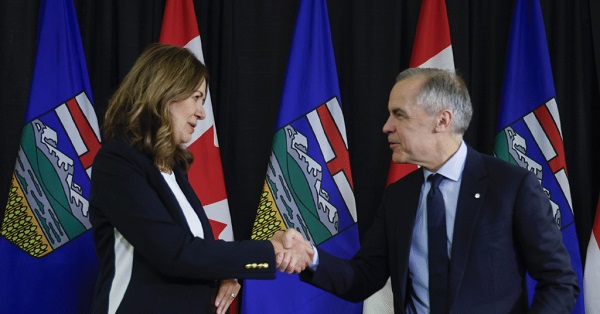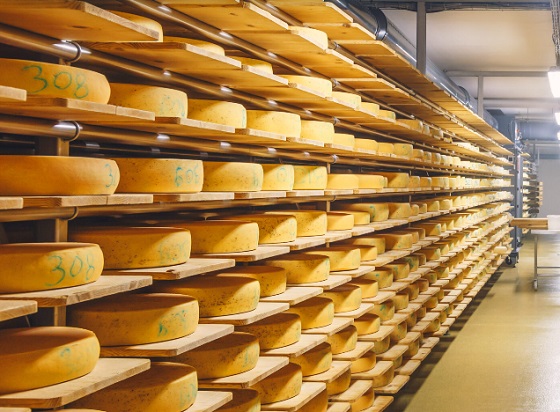Travel
Angling and adventure greet our intrepid traveller on Padre Island

By Gerry Feehan, award-winning travel writer and photographer. Here is his latest story, Padre Island, Texas.
_________________________________________________________________________________________
“…I peaked through a stack of chili-flavoured pork rinds, past a battered flag of the Lone-Star State hanging in the dirty window, and into the parking lot. Smiley was staring storeward… waiting….”
Padre Island Texas is a long spit of sand dunes guarding mainland Texas from the destructive tornadoes and winter storms that pound in from the Gulf of Mexico. Between this narrow barrier island and the mainland lies Laguna Madre, a shallow hyper-saline sea renowned for sensitive sea grass and world-class fishing.

The end of the road on South Padre Island.
On some Padre Island, Texas beaches, camping is free. South of Corpus Christi, at Padre Island National Seashore, free boon-docking extends for over 100 kilometres. But the sandy entrance is also the only exit. So, after you bite off as much of the hard-packed seashore road as you can chew and you’ve had your fill of remote surf and turf, a tight U-turn and a long return drive up the beach is required to get back to civilization.
It was shoulder season, so we and our RV had the whole shoreline to ourselves.

Now that’s remote camping!
The other campers were all outfitted for fishing. “When in Rome,” thought I and asked the park ranger if he knew of any local fishing guides.
The weather was atrocious: 3°C with a 70-kilometer north wind. Only a Canuckle-head would beach in such conditions; five meters from the raging ocean and sideways to a Gulf gale. The van was a rockin’ all night.
In the morning the weather cleared, the sun shone and the wind ebbed, portending a fine day on the Laguna Madre. We drove back across the causeway to the mainland, toward Arroyo City and a lovely campground along a canal fronting the ocean. We chose a site protected by live oak trees in case (heaven forbid) the weatherman’s prognostication was inaccurate and the wind began to howl anew. As per our typical MO, we arrived at dusk, sans reservation.
The other campers were all outfitted for fishing. “When in Rome,” thought I and asked the park ranger if he knew of any local fishing guides.
“No, I sure don’t,” he said. “Y’all could check with the live-bait store back in town. Look for the big sign – a redfish – out front. They may have a’ idea.” I asked Florence if she’d mind hanging solo for a day while I went angling. “No, go ahead. I’ll spend the day relaxing, reading and knitting.” I wandered down the road. When I saw red, I stepped in. The shop smelt. After baiting the proprietor with fishing small-talk, I asked, “Do you think you could find a guide to take me out tomorrow?”
“Well, I know of a fella lives right by,” he said, chewing uncertainly on a pork rind, “but it’s kind of late and I doubt he’d be available on short notice. I could call if you like.” He picked up the phone.

Captain Smiley
Five minutes later ‘Captain Smiley’ was walking in the door. He shook my hand and arrangements were made to tackle an early morning. The sun had not yet risen when the Captain putt-putted up to our riverfront campsite and welcomed me aboard. Minutes later, dawn greeted us as we cast our first lines into the shallow, glassy waters of Laguna Madre. A fat red drum hit on my second cast; a fighting day was upon us.
I had a great time with Smiley. Affirming his moniker, he laughed and joked all day long in his charismatic Tex-Mex accent.
The night before I had warned the Captain that I was short on greenbacks and would need to pay by cheque. He hesitantly agreed. When we arrived back at dock he expertly prepped my red-fish “on the half-shell” for grilling. Driving me back to our campsite he diverted his battered pick-up truck toward the bait shop. Pulling up he informed me that there was an ATM inside. Evidently he preferred cash to a cheque written on the reputable but foreign Royal Bank of Canada. I smiled, opened the door and headed into the store.
I had no bank card, just a US Visa. Uncertain if I could withdraw cash or whether my PIN# would work, I shoved the card in, chose English over Spanish as my language of preference and, after agreeing to an unreasonable fee for using the bank machine (“in addition to whatever other charges your financial institution may impose”). I prayed silently as I entered my personal security particulars. The machine sat quietly for a time, made some distant interior rumblings and eventually announced: “Request Declined.”

Roseate spoonbill
I peaked through a stack of chili-flavoured pork rinds, past a battered flag of the Lone-Star State hanging in the dirty window, and into the parking lot. Smiley was staring storeward… waiting.
I checked to see if there was a back exit. The wary owner eyed me suspiciously. The rear door led through a heap of fish offal into an alligator-infested swamp. Preferring embarrassment to an awful death, I thought I’d again ask the Captain if he would accept my cheque. I took a last baleful glance at the ATM and noticed a message: “maximum withdrawal $120.” I had requested too much dinero. I started the process anew, punched in my PIN, agreed to pay the usurious fees and crossed my fingers. The machine slowly spat six tattered twenties at me. A full day of guided fishing is not cheap. I repeated the process a few times. Eventually the tired machine coughed up enough cash to retire my piscatorial indebtedness.
I handed the dough to Smiley. He smiled and asked, “Do you want to fish tomorrow?” I couldn’t envisage enduring another ATM debacle and, in any event, it was time for us to move on from this arroyo.
“No thanks,” I said, “we need to hit the road tomorrow.”
“Aw, that’s too bad,” said Smiley. “Tomorrow’s my day off and what I do on my day off is… go fishing. I’ll take you out on my dime.”

A great blue heron eyes the fishing.
I saw my calendar clearing.
I called Florence to ask leave. She concurred, delighted. (Apparently, one day away from her beloved was insufficient to create any overwhelming desire to be reunited in the confines of our small RV.)
I had another great “caught my limit” day of fishing. As I fried up a delicious speckled sea trout that night, Florence asked, “Are you going fishing again tomorrow?”
“Naw,” I said. “Smiley’s got a customer lined up for the morning.”
“Gee, that’s too bad,” she said, “this fish is incredible.” She was eyeing her knitting.
______________________________________________________________________________________________

Gerry Feehan
Hope you enjoyed your trip to Padre Island Texas. Gerry Feehan is an award-winning travel writer and photographer. He and his wife Florence live in Red Deer, AB and Kimberley, BC. You can read more of his stories here.
“India? Are you nuts?” Join Gerry for Part 1 of his series on India.
Business
Carney government should privatize airports—then open airline industry to competition

From the Fraser Institute
By Alex Whalen and Jake Fuss
This holiday season, many Canadians will fly to spend time to with family and friends. But air travellers in Canada consistently report frustration with service, cost and choice. In its recent budget, the Carney government announced it will consider “options for the privatization of airports.” What does this mean for Canadians?
Up until the 1990s, the federal government served as both the owner and operator of Canada’s major airports. The Chrétien government partially privatized and transferred the operation of major airports to not-for-profit airport authorities, while the federal government remained the owner of the land. Since then, the federal government has effectively been the landlord for Canada’s airports, collecting rent each year from the not-for-profit operating authorities.
What would full privatization of airports look like?
If the government allows private for-profit businesses to own Canada’s major airports, their incentives would be to operate as efficiently as possible, serve customers and generate profits. Currently, there’s little incentive to compete as the operating authorities are largely unaccountable because they only report to government officials in a limited form, rather than reporting directly to shareholders as they would under privatization. Private for-profit airports exist in many other countries, and research has shown they are often less costly for passengers and more innovative.
Yet, privatization of airports should be only the first step in a broader package of reforms to improve air travel in Canada. The federal government should also open up competition by creating the conditions for new airports, new airlines and new investment. Currently, Canada restricts foreign ownership of Canadian airlines, while also restricting foreign airlines from flying within Canada. Consequently, Canadians are left with little choice when booking air travel. Opening up the industry by reversing these policies would force incumbent airlines to compete with a greater number of airlines, generating greater choice and likely lower costs for consumers.
Moreover, the federal government should reduce the taxes and fees on air travel that contribute to the cost of airline tickets. Indeed, according to our recent research, among peer countries, Canada has among the most expensive air travel taxes and fees. These costs get passed on to consumers, so it’s no surprise that Canada consistently ranks as a very expensive country for air travel.
If the Carney government actually privatizes Canada’s airports, this would be a good first step to introducing greater competition in an industry where it’s badly needed. But to truly deliver for Canadians, the government must go much further and overhaul the numerous policies, taxes and fees that limit competition and drive up costs.
International
America first at the national parks: Trump hits Canadians and other foreign visitors with $100 fee

Foreign visitors heading to America’s crown-jewel national parks will soon face a steeper bill, as the Trump administration moves to prioritize U.S. taxpayers who already bankroll the system. The Department of the Interior announced Tuesday that starting in 2026, non-residents will be charged an additional $100 at 11 of the country’s busiest parks — a list that includes the Grand Canyon, Yellowstone, Yosemite, Acadia, Everglades, and other iconic destinations. The change accompanies a sharp increase in the cost of an annual all-parks pass for foreign tourists, which will jump to $250, more than triple the current rate. Americans and permanent residents will continue paying $80.
Interior Secretary Doug Burgum framed the policy as a straightforward matter of fairness. “President Trump’s leadership always puts American families first,” he said, arguing that U.S. households already subsidize the National Park System and deserve affordable access while international tourists contribute “their fair share” to the upkeep and expansion of the park network. It’s a pitch that aligns with Trump’s broader push to restore what he calls a sense of ownership and pride in the country’s natural treasures, and to make sure the burden of maintaining them doesn’t fall solely on American families.
We’re making it easier & more affordable for Americans to experience the beauty & freedom of our public lands!
In 2026, we’re launching:
– America-first pricing 💵
– Digital passes 📱
– Patriotic pass designs 🇺🇸
– Expanded motorcycle access 🏍️
– 5 additional fee-free days 🗓️ pic.twitter.com/a2SvHNBdSP— Secretary Doug Burgum (@SecretaryBurgum) November 25, 2025
The National Park Service recorded nearly 332 million visits in 2024 across its 63 designated national parks — a staggering figure that has placed heavy pressure on trails, facilities, and staff. While some parks charge per-vehicle fees and others by the individual, the $80 “America the Beautiful” pass covers the holder and all passengers or up to four adults. Under the new rules, foreign visitors who purchase the $250 annual pass will avoid the extra $100 at the 11 high-traffic parks, but all other overseas travelers will pay the surcharge at the gate.
The administration says the approach follows a July executive order from President Trump, aimed at preserving parkland “for American families” by ensuring those who don’t support the system through taxes help shoulder the cost of its growing maintenance needs. Burgum’s department also highlighted that U.S. visitors will continue to enjoy “patriotic fee-free days” tied to national observances — including President’s Day, Veterans Day, and Flag Day, which coincides with Trump’s birthday — while foreign visitors will pay full freight.
The move is expected to generate significant revenue from international tourism while reinforcing a message that has become central to Trump’s agenda: America’s natural wonders belong first to the taxpayers who fund them, and protecting access for those families comes before subsidizing the travel of visitors from abroad.
-

 International2 days ago
International2 days agoAustralian PM booed at Bondi vigil as crowd screams “shame!”
-

 Uncategorized2 days ago
Uncategorized2 days agoMortgaging Canada’s energy future — the hidden costs of the Carney-Smith pipeline deal
-

 Alberta1 day ago
Alberta1 day agoAlberta Next Panel calls to reform how Canada works
-

 Automotive1 day ago
Automotive1 day agoCanada’s EV gamble is starting to backfire
-

 International5 hours ago
International5 hours agoGeorgia county admits illegally certifying 315k ballots in 2020 presidential election
-

 Digital ID22 hours ago
Digital ID22 hours agoCanadian government launches trial version of digital ID for certain licenses, permits
-

 Business21 hours ago
Business21 hours agoThe “Disruptor-in-Chief” places Canada in the crosshairs
-

 Agriculture1 day ago
Agriculture1 day agoEnd Supply Management—For the Sake of Canadian Consumers





